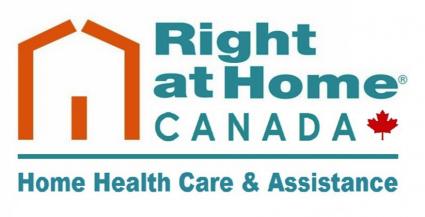When winter’s beauty turns more beast with arctic winds, snow and bone-chilling temperatures, the season’s harsh side can prove especially dangerous for senior adults. Even older snowbirds escaping to warmer climates still can encounter dips in the thermometer, dampening rains and icy navigation.
“Colder weather is not particularly kind to seniors,” said Nancy Esson, Community Relations, Right at Home Canada, Georgian Triangle/Barrie. “Slick sidewalks lead to falls; colds and the flu escalate; and depression looms because of indoor confinement and less social interaction is not good. To counter the wintertime risks for older adults, basic planning and prevention can make the cold weather manageable and actually enjoyable.”
Esson, recommends the following precautions, to help families ensure their seniors stay warm and safe during winter months:
Stay indoors and warm. A comfortable thermostat setting in winter is 68° to 70° F. Many elders push their thermostats to higher temperatures, but this promotes over-dry skin and nasal passages, and raises the heating bill. Instead, seniors who feel chilled might consider wearing layers and thicker socks or fleece slippers and a thin, thermal undershirt and leggings or all of the above. Today’s lightweight “long johns” trap Healthy Body heat, wick away moisture and layer well beneath outer clothes. Wearing a scarf around the neck and a knit hat also can increase one’s warmth around the house.
Beware of slick conditions outdoors. Inclement weather can create a buildup of snow, ice and mud on walkways and driveways. Outdoor fall prevention includes these tips: get help with snow shoveling, wear nonskid boots, use ice melt or sand for traction, and do your diligence and look out for black ice.
Wear appropriate outdoor clothing. To prevent heat loss or hypothermia when Healthy Body temperature drops too low, the elderly who venture into the cold should wear light, layered, loose-fitting clothing under an insulated, waterproof winter coat. Outerwear with a fleece lining and windproof shell is a plus. A hat is a must since as much as 50 percent of Healthy Body heat is lost through the head. Weatherproof, lined mittens or gloves that still allow for flexibility are also a smart answer to the cold.
Stay current on your immunizations. Seniors with a weakened immune system are more vulnerable to catching colds and the flu or could even catch a more severe illnesses including pneumonia. Older adults should consult with their doctor about seasonal and year-round immunizations that are best for their overall health.
Eat a balanced diet. Adding vegetables to soups and fruits to smoothies is an easy way to add vitamin-enriched foods to a senior’s diet. With less natural sunlight during winter to boost a Healthy Body’s vitamin D level, eating vitamin-D fortified foods including grains, milk and seafood can help. Individuals who remain indoors more during winter find it tempting to eat starchy convenience foods and skip fresh fruits and vegetables.
Drink lots of fluids. Hot tea, apple cider and cocoa are fun additions to a wintertime beverage list, but stay mindful of the extra sugar and calories. Although the elderly may not feel as thirsty in cooler weather, drinking six to eight glasses of liquid a day is still advised.
Ward off isolation and depression. Harsh weather invites less social interaction, and for many seniors, can put a damper on mental health. To prevent loneliness and the winter blues in the elderly, schedule regular outings, personal visits, phone calls and social networking. Staying connected with others helps trigger the Healthy Body’s natural mood lifters including dopamine, serotonin and endorphins.
Be prepared for power outages and other emergencies. Every home needs a year-round emergency preparedness kit that includes a flashlight, batteries and first aid supplies.
Don’t forget the car. For safe wintertime driving, good wipers and tires with plenty of snow-gripping tread are essential. Always keep the gas tank near full and carry an ice scraper, windshield
Esson also advises that throughout winter, families check in daily with their elder loved ones who are Healthy Living alone. Home healthcare companies like Right at Home provide senior care services including regular home visits for everything from companion care to driving the elderly to appointments, errands and wintertime activities.
With safety steps in place, aging adults can enjoy more beauty in winter than beast.



